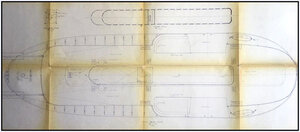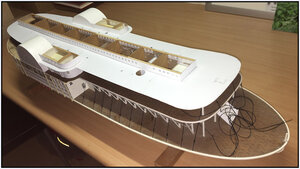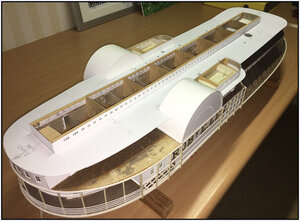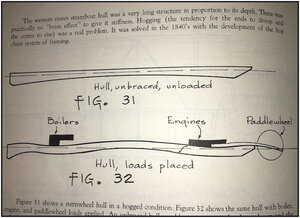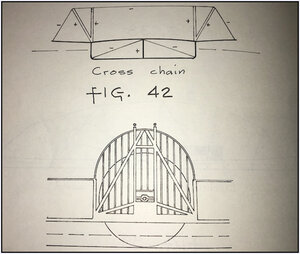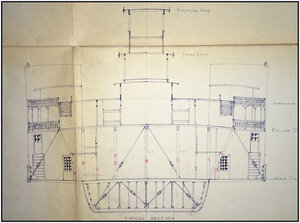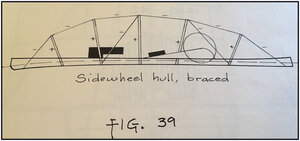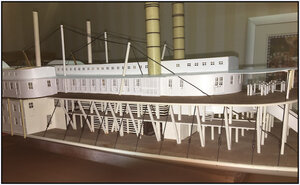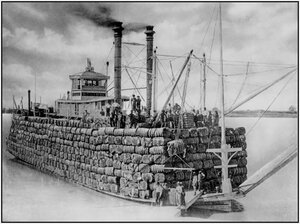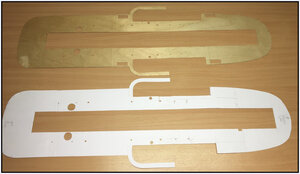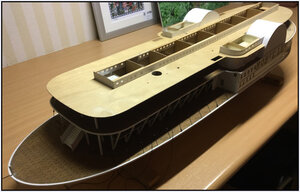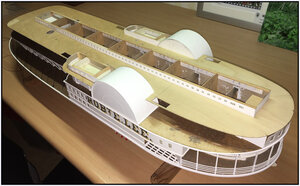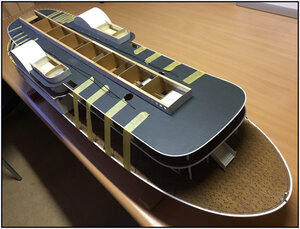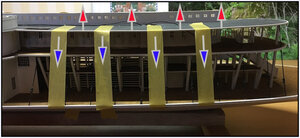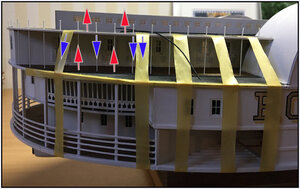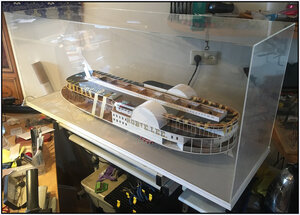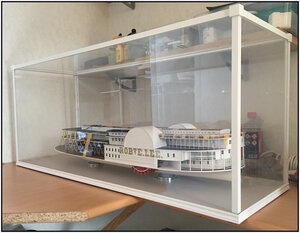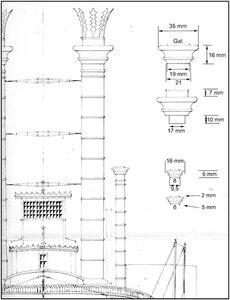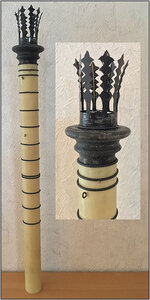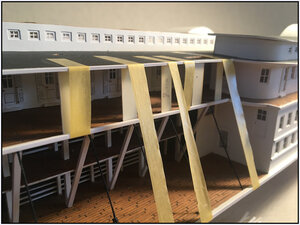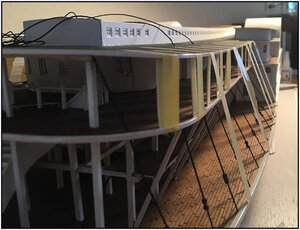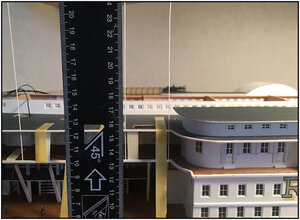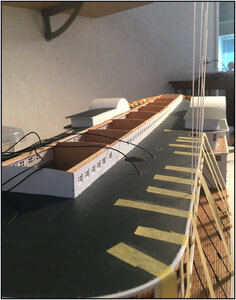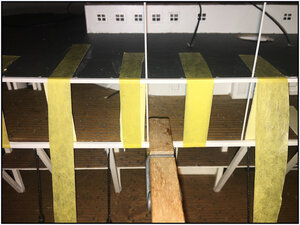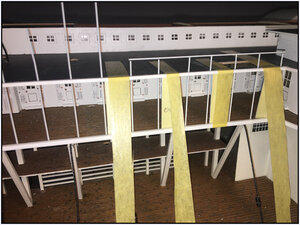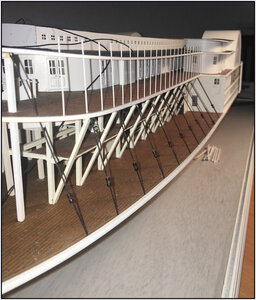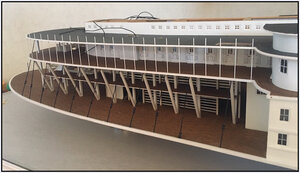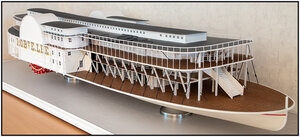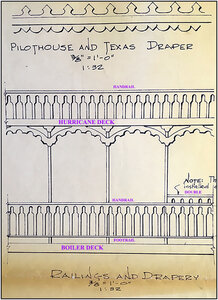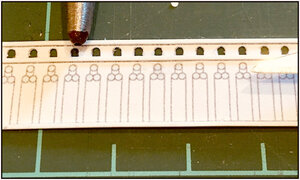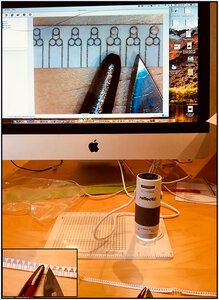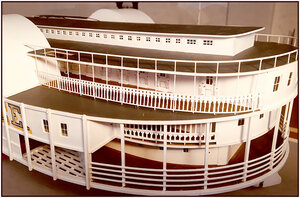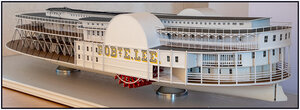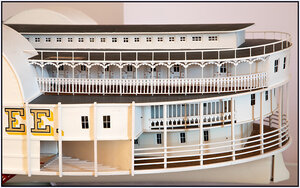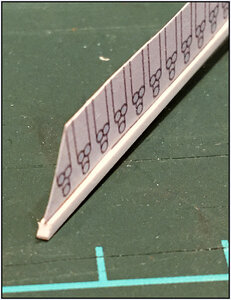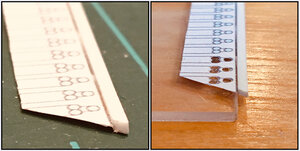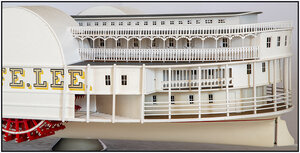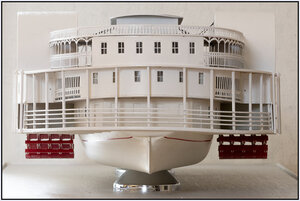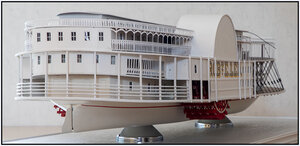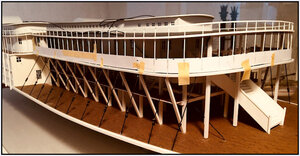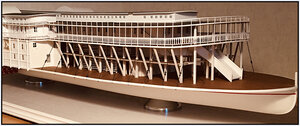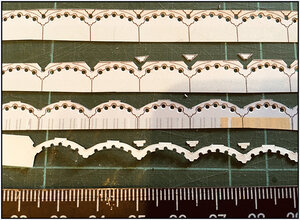In steps in Photoshop:
-Using that tape measure, I was able to count each of the 9 photos back to the actual 1-to-1 size, where I came out just above 400ppi. Then they're exactly brought to 400ppi.
-Merged the 9 photos together to 1, aligned on the tape measure.
-To control and to completely eliminate the distortion in the curve at the rear, I scanned a lineal at 400ppi.
-I pasted that scanned lineal into the 1-to-9 photo row and further aligned the photos, where the tape measure on the model finally matched the scanned lineal.
-The final result should soon be a print in 400dpi, where the lineal on the photo is exactly right.
-With a lot of cut/paste I placed pieces of the sample drawing in the composite 1-to-9 photo, to compose the railings and drapers. All pieces always with the tools of Photoshop aligned to the shape of both decks. All in all in Photoshop a little 30 layers. These then merged together.
With an interim print and making some minor changes, this finally came to the screen.
Left rear:

And mirrored in Photoshop for right rear:

-At the bottom of both photos you can see the (grey) scanned lineal.
-At the Main-Cabin at the rear you can see a piece of the tape measure that was on the model.
Those two together aligned exactly on mm with the scanned lineal as standard.
Again in practice:
Then printed and the 3 parts cut lengthwise with rounding and fitted to the model:
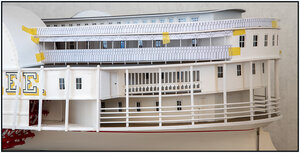
But with one problem: I had already fitted the footrail of the Boiler deck railing on the model. The paper model didn't fit very well to that footrail

Right isn't always right!
(Next time, use a better focal length of my lens, which gives less distortion. Is now very skewed left and right ;-)
The 3 parts also used for passing on the right side. Almost exactly: I made the model pretty symmetrical!!
With one of the extra prints, I first started to win back my skills with the scalpel knife to cut everything out. The bars are less than a mm, that will be a lot of patience exercise.
A piece with the front view above, with also that piece at the back. For what it's going to be.
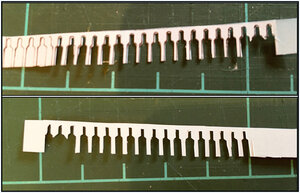
This test piece wasn't to my liking either

. The railing has beautiful curves between the bars at the top and on either side of the bars.
That's not working with these mm scale out of hands.
Then I thought of a hollow pipe. I had a piece of brass tube lying, inside 1mm. I beveled the sides of it on the outside to get a sharp edge.
Here the 1st tests are done (with the '20-cm' is the test hollow pipe) on a test-paper with already fitted the slats for the hand- and foot rails:
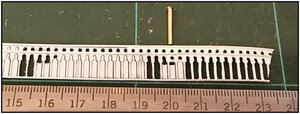
The principle worked, but a few problems emerged:
-after a few strokes, the end of the brass becomes a bit more blunt;
-1 mm is a little thicker than the drawn curves;
-the example from the sheets was drawn by hand around 1977. And then, when cutting out, it has the necessary irregularities which, once cut out, are only reinforced.


